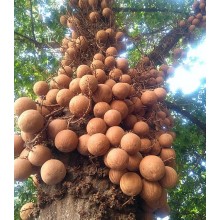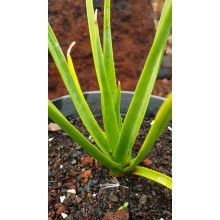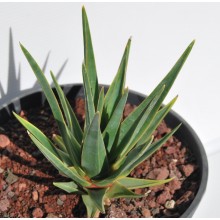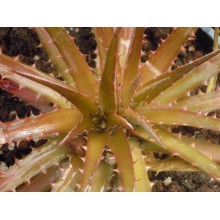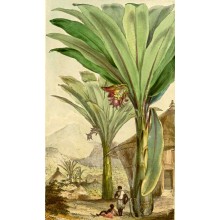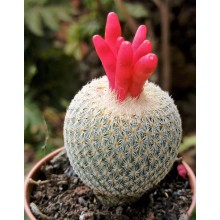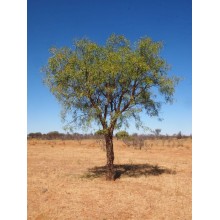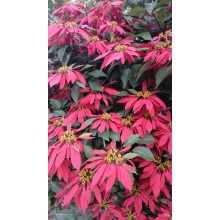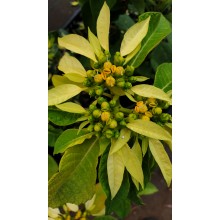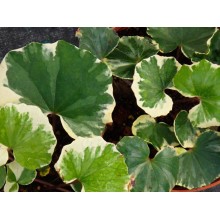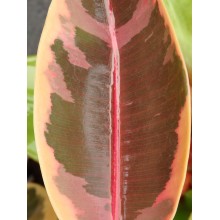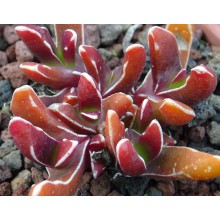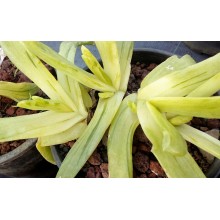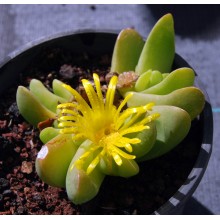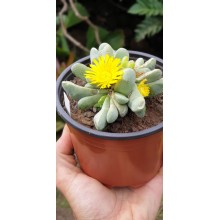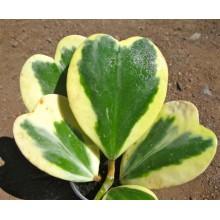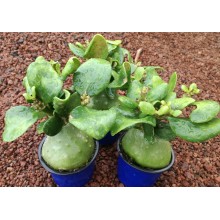Special There are 77 products.

Subcategories
-
Cold-Hardy Plants
This is our selection of plants that can stand some cold. Some will only resist to cool weather and light frost, but some others will take hard frost in colder climates. They are all very different but they deserve to be tried because all these tropical-looking plants have non tropical requirements. They will surely thrive outdoors in coastal Mediterranean climates or in a mildly heated greenhouse where frost does not occur.
-
Unusual Plants
This is our selection of extraordinary plants. They are all very different and somehow unusual. There are air plants, red bananas, living stones, plants with black leaves, zig-zag cacti and all types of eye-catching plants and conversation pieces.
-
Variegated Plants
Variegated Plants have striped or spotted leaves with attractive colours. Variegation in plants occurs for many reasons. Most commonly it is a genetic mistake that occasionally appears in nature. A white variegation is the result of a plant's inability to produce any pigment in that area. A lesser production of the pigment chlorophyll will allow orange, yellow and light green colors to appear, or even shades of pink, red and purple. These plants are slower than their green relatives and often more expensive. We offer Variegated Agaves, Variegated Aspidistras, Variegated Bromeliads and lots of Variegated Succulents.
-
Drought resistant plants
In this plant section, we group together those plants which are adapted to arid or drought conditions. Normally, the majority of these species, grown in dry conditions, are waxy, succulent, hairy, sticky, needle-like and even, smaller than the rest.
In Drought Resistant Plants you can find any species with these features: Pithecellobium dulce, Ruta graveolens, Syzygium cordatum, Tamarindus indica and so on.
-
Couroupita guianensis - Cannonball Tree
Couroupita guianensis - Cannonball Tree
This extraordinaty exotic ornamental tree is a real people stopper. It profusely produces intensely fragrant red and pink flowers.
50,00 € -
Dracaena cinnabari
Dracaena cinnabari
The most extraordinary dragon tree is the one from the island of Socotra. Here we offer 3-4 years old seedlings.
83,40 € -
Dracaena cinnabari- LARGE
Dracaena cinnabari- LARGE
The most extraordinary dragon tree is the one from the island of Socotra. Here we offer 5-6 years old seedlings.
287,00 € -
Dyckia fosteriana rubra
Dyckia fosteriana rubra
This is a supreme clone of Dyckia fosteriana, with bronze coloured rosettes. It is a cold-resistant bromeliad from the rocky mountains of Paraná, in South Brazil.
19,50 € -
Ensete ventricosum - Abyssinian Banana
Ensete ventricosum - Abyssinian Banana
This "mountain banana" comes from high-elevation tropical Africa and bears enomous leaves with a solid red rachis. It grows well in warm temperate and Mediterranean climates. It is not a true banana of the genus Musa, so its fruits are not edible. Nevertheless, in Africa the corms are regularly collected and eaten.
57,30 € -
Epitelantha micromeris
Epitelantha micromeris
Very ornamental small cactus from the SW USA and Mexico, coated with white unharmful spines. It blooms in late winter with pale pink flowers that are soon followed by some very attractive frutis, which are dark pink, glossy and last form months!
10,80 € -
Erythrina vespertilio - Bat's wing coral tree
Erythrina vespertilio - Bat's wing coral tree
This Australian Erythrina is incredibly attractive shrub to small tree, with unmistakeable bat-wing trifoliate leaves. It is graceful and easy to grow. It grows in dey areas and develops a thick base: a caudex which grows very thick both underground and above ground. It is suitable to pot colture and the caudex can be exposed as a potted "bonsai".
119,80 € -
Euphorbia pulcherrima 'Tall Wild Type'
Euphorbia pulcherrima 'Tall Wild Type'
This is the most classic tall heirloom poinsettia which is so widespread in the old gardens of the Canary Islands and the Southern Mediterranean.
24,50 € -
Euphorbia pulcherrima 'Tall Wild Type' YELLOW
Euphorbia pulcherrima 'Tall Wild Type' YELLOW
This is the most classic tall heirloom poinsettia which is so widespread in the old gardens of the Canary Islands and the Southern Mediterranean.
24,50 € -
Farfugium japonicum 'Argenteum'
Farfugium japonicum 'Argenteum'
This classic clone of Farfugium is still unsurpassed in beauty. Leaves show many different hues of white. This variegated 'Argenteum' adds light to a shady spot in the garden. It has been around for more than a century but it is still only grown by specialized nurseries because it is slower than other cultivars.
24,50 € -
Glottiphyllum difforme
Glottiphyllum difforme
This is the most beautiful and least known species in the genus Glottiphyllum. Few collectors grow it and no pictures in the web show the beauty of well-grown plants.
16,80 € -
Glottiphyllum neilii
Glottiphyllum neilii
The "King of the Glotts" is said to be the largest of all the species in the genus Glottiphyllum. Leaves can get quite red when somehow stressed, It is easy to grow, and just as the rest of the genus Glottiphyllum it is chiefly winter-growing but it does not have a true resting season.
10,70 € -
Glottiphyllum oligocarpum
Glottiphyllum oligocarpum
This is a very attractive compact and blue glotty. Leaves are short and waxy and can look blue to grey. The flowers are so large that they cover the whole rosette.
12,00 € -
Heliconia mariae
Heliconia mariae
Hanging heliconia of unusual beauty, with velvety-hairy pink inflorescences and gorgeous foliage, which is glossy and marron underneath.
64,20 € -
Heliconia x 'Pendulata Spotty Stems'
Heliconia x 'Pendulata Spotty Stems'
We selected this hybrid here in Tenerife. It is a particularly nice and hardy cross between Heliconia subulata and H. pendula, which are two cool-hardy species, good for the subtropics.
27,76 € 34,70 €Reduced price! -
Hoya kerrii 'Variegata'
Hoya kerrii 'Variegata'
A variegated clone of the popular heart-shape leaved Hoya kerry. Easy to grow even in tough conditions, thanks to its succulent leaves.
28,50 € -
Hydnophytum moseleyanum
Hydnophytum moseleyanum
This caudex ant-plant is an epiphytic plant that develop a huge chambered stem, providing shelter for some species of ants.In turn, these ant-plants, or myrmecophytes, receive nutrients and protection from the ants. The caudex of Hydnophytum moseleyanum can get quite large, up to 20-40 cm in diameter, and the bark is grey and smooth (much like the one of...
17,20 €
At the moment there are few products in this category Special




















